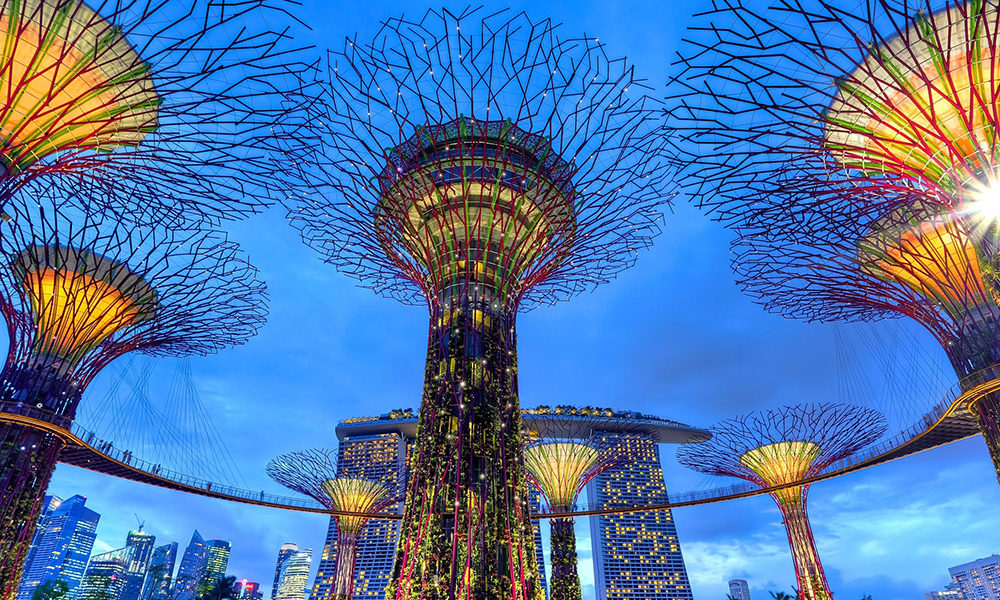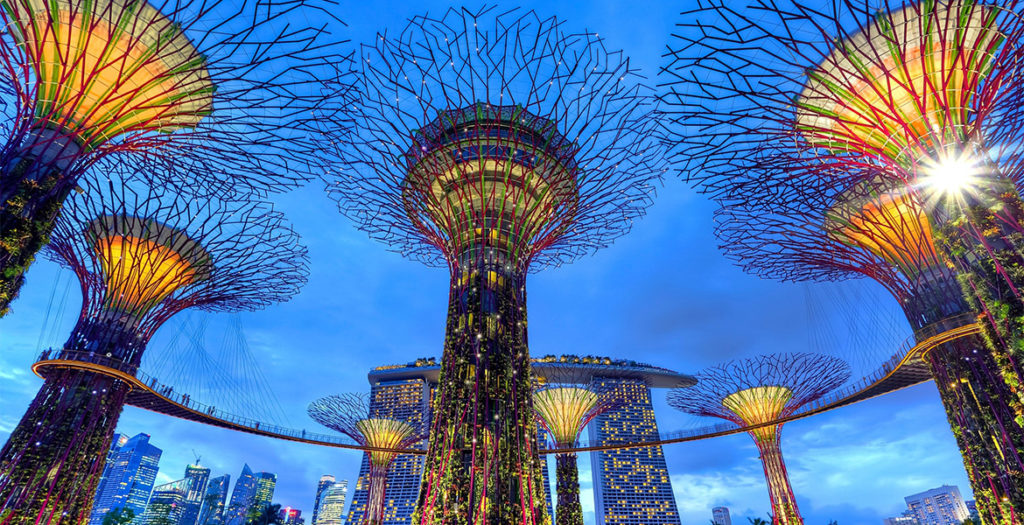Green walls, or vertical gardens, are on the rise worldwide. Some of the biggest, most spectacular and widely known, are Singapore’s Supertrees (pictured above) in the Gardens by the Bay precinct, spanning 58 hectares. It’s at the heart of a financial centre that was created on reclaimed land in the Marina Bay area.
With their concrete cores, these steel-clad structures each stand between 20m and 50m tall and there are 18 of them. Covered in plants, they are tourist magnets for the sheer spectacle they create, especially at night. But these are much more than beauty spots. Through some mind-bendingly clever innovation and design, they provide sustainable energy and the infrastructure for the site’s vast climate-controlled conservatories – two of the world’s largest greenhouses.
But while the Supertrees are the larger-than-life poster children for vertical gardens, you could create your own vertical garden on a much smaller scale. The desire for a more eco-friendly environment, wanting to grow your own herbs or vegetables, limited open space, a bit of wall space… these are all good reasons for starting a vertical garden.
We’re living in smaller spaces, but at the same time, many of us want to go back to what’s good for us by eating more healthily. A vertical veggie garden could be the answer because it means you could have fresh, organically grown herbs and vegetables every day. You’d also cut your carbon footprint because you won’t be consuming mass-produced products, and you wouldn’t have to drive to get hold of them.
A vertical garden could work almost anywhere. Basically, if you have a wall, you could have a garden. Even on the smallest little balcony, you could still have a vertical garden growing the things you love – to eat, or to look at, or both.
Thanks to their growing popularity, there’s more choice and less hassle to put them in place. The earliest versions were usually a metal framework fixed to a wall, which required expert or professional help, and only certain types of containers or pots would fit in these frames. But now there are loads of systems and sizes to choose from, and the containers range from traditional plant pots in plastic or ceramic, to decorative containers, and even panels or pockets made from geotextile fabric that feels like soft felt and is lightweight, but highly durable, sturdy and tough.
Not difficult therefore, to create your own tapestry of colour and texture, greening your immediate surroundings and creating something that’s both useful and beautiful.
A vertical garden is one of the many beautiful things you could enjoy in a brand-new apartment at Melrose Arch. The latest residential development within the precinct, is One on Whiteley. Call Tersia Taljaard on 087 897 0222 or email tersiat@amdec.co.za if you’d like to come and take a look. Or to discuss other opportunities to live, work or invest at Melrose Arch or other developments by the Amdec Group.


